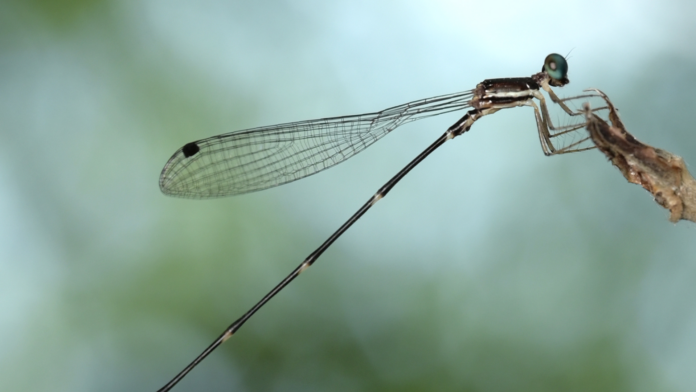
~ Puts spotlight on the urgent need for Climate Action ~
New Delhi, 29 September 2023: In a remarkable discovery that sheds light on the critical state of our planet’s ecosystems, MIT-WPU researchers have introduced the world to the ‘Armageddon Reedtail –Protosticta Armageddonia ‘ a newly unearthed damselfly species. This new species, with its ominous moniker, serves as a stark reminder of the ecological crisis our world faces due to rampant habitat loss and climate change. Experts are using this discovery as a powerful call to action for world leaders, urging them to address the urgent issues of global warming and their catastrophic impact on biodiversity.
The revelation of this newfound species has been officially documented in the esteemed International Journal of Odonatology, a publication affiliated with the Worldwide Dragonfly Association based in the United States. Furthermore, the discovery has been meticulously recorded and registered with the Zoological Survey of India, Pune office, underscoring its significance in the scientific community. The daring expedition team, comprising the expertise of Dr. Pankaj Koparde, Assistant Professor, Department of Environmental Studies at MIT-WPU, the research prowess of Arajush Payra, a dedicated PhD Scholar at MIT-WPU, the enthusiasm of Ameya Deshpande, an accomplished MSc Environmental Science Student at MIT-WPU, and the keen eye of Reji Chandran, a seasoned Wildlife Photographer hailing from Kerala, played a pivotal role in this momentous achievement.
The newfound species exhibits a captivating dark brown to black body with vibrant greenish-blue eyes, and it features delicate pale blue markings on half of its eight abdominal segments. Its exclusive habitat choice is primary montane streams, where it thrives beneath dense canopy cover. The name Armageddon Reedtail is a direct reference to the concept of “Ecological Armageddon,” a term used to describe the devastating decline of insect populations around the world. This phenomenon, often referred to as the “Insect Apocalypse,” has far-reaching consequences for entire ecosystems, as insects play crucial roles in pollination, nutrient cycling, and as a food source for other animals.
Dr. Pankaj Koparde, Asst. Prof at MIT-WPU and Lead Researcher for the Armageddon Reedtail discovery, underscores the gravity: “The naming of this new species is not merely an academic exercise; it’s a desperate plea for attention. Just as this species faces the threat of extinction due to habitat loss and changing environmental conditions, countless other endemic and endangered insects are on the brink of vanishing forever. We are standing on the precipice of an ecological catastrophe, and urgent action is needed to reverse this course. We need a collaborative effort involving scientists, conservationists, policymakers, and the public to combat climate change and protect our planet’s biodiversity.”
Mr. Reji Chandran, a prominent wildlife photographer and team member who first spotted the species, echoed Dr. Koparde’s sentiments, stating, “I have seen the forests of the Western Ghats change rapidly due to rampant development and habitat loss. The discovery of Armageddon Reedtail serves as a symbolic representation of the broader crisis we are facing and we need to do something about it before it’s too late.”
“The new Protosticta species is different from its congeners based on various morphological features. Keying it out was a difficult task but we now have a clarity about its taxonomy. I believe that our discovery will be a milestone in Indian odonatology,” concluded Arajush Payra, PhD Scholar, MIT-WPU, entomologist and lead author.
The case of Armageddon Reedtail serves as a solemn reminder that we are at a crossroads. The choices we make now will determine the fate of countless species and the health of our planet for generations to come. It’s a call to action that resonates not only within the scientific community but with every individual concerned about the future of our world.
The full paper is available here: https://doi.org/10.48156/1388.2023.1917043
